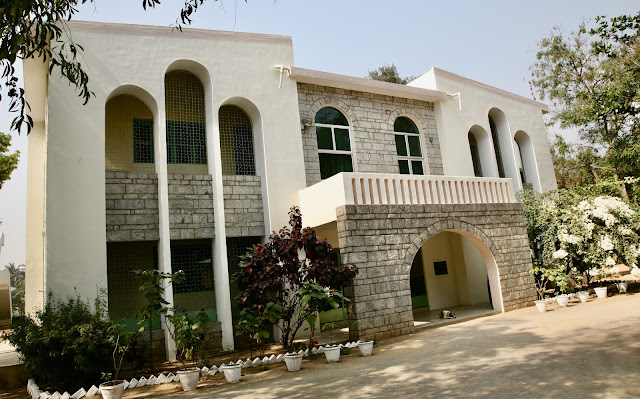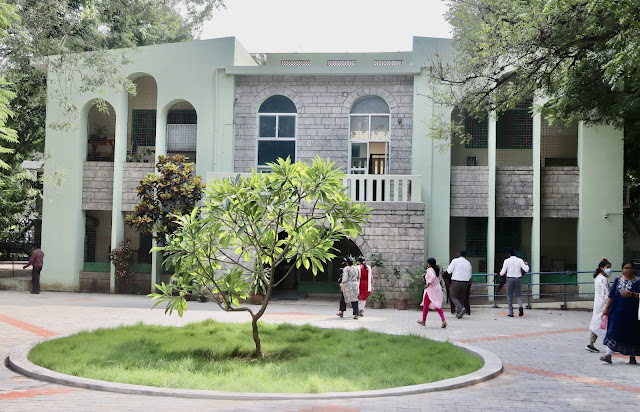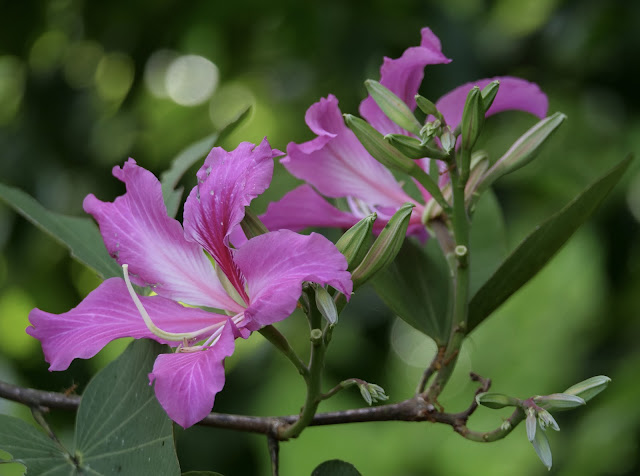31 October, 2024
The roots and homes !
30 October, 2024
Seeking together !

Following this intriguing sight, I went out of the campus where I was living to take a walk along the road to the next village. I found two similar looking houses in a farm land. They were separate with a common courtyard and separate backyards.
29 October, 2024
BALANILAYAM a gift for children
The above facility started in the nineteen eighties near to the Bagayam campus of the Christian Medical College,Vellore (CMCV) by two nursing professionals, Ms Marlene Thomson and Ms Ann Bothamley, working at CMCV. This was to offer a residential facility for school going children, whose parents were working cross culturally in mission hospitals in different parts in India, where adequate schooling opportunity did not exist.
Marlene and Ann who shared an accommodation at the CMCV campus initially offered their home to welcome girls, while they went to study at Ida Scudder School. Dr P Zachariah, working at CMCV supported this good will gesture. Following the formation of a trust, BALANILAYAM, a suitable place was found at Bagayam to build the facility to have a custom made home for children to stay with house parents. Marlene and Ann received support from their friends, well wishers and their supporting organisations in Australia and Britain to build and furnish the home for children. The facility was dedicated on 1.1.1990.
When we relocated at Vellore in 1997, Anna was invited to be associated with the trust, which gave us opportunities to have more regular contacts with Marlene and Ann. By then the home for children had developed into a second home away from their biological home, for children who came from different parts of India.
There were two separate residential places, one each for boys and girls with dormitories, study rooms, dining hall, book room, recreation room, outdoor play area, garden, and plenty of space for quiet walk. The routine of the day corresponded to what would happen, in a regular home with considerable attention to upbuild children in their formative process. Marlene and Ann took turns to be with children in the evenings and week ends, while the house parents took the lead in being the foster parents and primary care providers during the rest of the week. I recall how parents who came to meet the children periodically felt comforted by the efforts at BALANILAYAM to make children feel loved, cared and provided for, which brought the needed comfort for parents, who missed being away from children.
The photos below taken in July 2007, during a get-together of children and parents bring back many memories of gladness, for what was offered to children by the thoughtful response of Marlene and Ann to attend to the felt needs of parents.
By this time Marlene had left for Australia after her retirement from CMCV.
The BALANILAYAM services gradually ceased to be needed, and the premises are currently used by CMCV to locate its Distance Education Department.
Yesterday, CMCV organised a community farewell to Ann as she now plans to relocate in Britain. The memories shared at the occasion were heart warming and moving, remembering the two nursing professionals who took a decision to support the mission hospital net work by offering to provide a second home for the children of professionals, working in mission hospitals or in similar service.
Anna and I recall Ann with many instances of thoughtful support she offered to us in our involvements. One instance I recall was that of her visit to the developmental paediatrics facility, ASHIRVAD partnered with CMCV, on the first day in February 1997.
The room where the facility was located was in the W ward, which was a good enough facility to start the clinical service. Ms Annie George, developmental psychologist and I were the two professionals, who moved from the Child Development Centre of ASHIRVAD at Chennai to begin the service.
Ann came to visit the room and felt that it needed more lighting. She arranged an additional tube light to be fixed on the same afternoon and requested the Medical Superintendent to appoint a domestic staff for the unit. It was her custom to visit us couple of times in a week to enquire about our wellness and help with some practical arrangements we needed.
There were other occasions when Ann was thoughtful to help and encourage us. Ann had a difficult time to decide whether to return to Britain following her retirement from CMCV. Her supporting organisation was keen to have her back in Britain for her to have more contribution to make in Britain. Ann chose to stay back in India. We felt her desire to do so as genuine and favoured her decision when her supporting organisation sought our opinion.
The memories about Ann are many. We remember her with love and warm regards and wish her peaceful transition after nearly half a century of involvement at CMCV.
It was common to see Peacocks in the campus in the earlier days when the area had more open space. Ann referred to the peacock coming to greet her as one among the many gifts she received from God.
24 October, 2024
The authentic experience!

The photos above were taken at times other than the golden hour photography in the morning or evening.
The colour,. exposure, brightness, shadows, the background look different from the photos taken posted below, during the golden hours of the morning or evening.
The sunlight and how the camera lens picked up the details, make the difference to the photos, to be as close to the natural tone and colour.
The original and something near to the original are different.
The original is authentic, the near normal to the original is only a pale shadow of the original.
Mrs Priyanka Gandhi, a candidate for the election to be a member of parliament, stopped her car while on her way to the constituency, when a person waved at her. She greeted him who told her, that his mother who was old and cannot walk to the road to greet her was keen to meet her. Mrs Gandhi offered to go with him to their home She spent 20 minutes at the house meeting with the lady and other members of the family. It was an unusual sight to see the Mrs Thresyamma embracing Mrs Gandhi and sitting next to her holding her hand.
The print press and the visual media publicised this widely as a gesture of Mrs Gandhi's genuine regards for a senior citizen. Her entourage had to wait till Mrs Gandhi returned to the car.
This is the heart of the matter. It was an authentic expression of genuine appreciation and consideration for a senior citizen. It is seldom we come across such an expression of thoughtfulness towards a person, who was until then unknown.
What is original is often unique !
The phots taken at the golden hours of the day are near to the natural loo. The spontaneous act of expression of kindness to a senior citizen was an authentic expression of kindness, which was unique.
What is common is a dichotomy between what is spoken and what is felt. The spoken kindness might not match the feeling within.
In this case the way Mrs Gandhi and Mrs Thresyamma responded to each other, had a heart level connection and communication. It was an authentic sight of mutual affection, without any guile or intention of gain.
It is an inner journey from appearance to feeling with the heart, which makes a home a rich place of relationships and mutuality!
M.C.Matthew (text and photo)
Mrs Priyanka Gandhi with Thresyamma from the daily news paper, Malayala Manorama, dated 23.10.2024















































